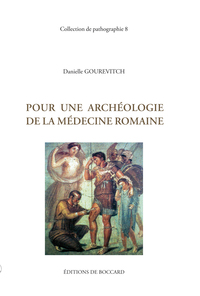Nous utilisons des cookies pour améliorer votre expérience. Pour nous conformer à la nouvelle directive sur la vie privée, nous devons demander votre consentement à l’utilisation de ces cookies. En savoir plus.
O dia em que mudei de nome. The Day I Changed My Name
De Boccard - EAN : 9782701805900
Édition papier
EAN : 9782701805900
Paru le : 4 juil. 2019
29,00 €
27,49 €
Epuisé
Pour connaître votre prix et commander, identifiez-vous
Manquant sans date
Notre engagement qualité
-
 Livraison gratuite
Livraison gratuite
en France sans minimum
de commande -
 Manquants maintenus
Manquants maintenus
en commande
automatiquement -
 Un interlocuteur
Un interlocuteur
unique pour toutes
vos commandes -
 Toutes les licences
Toutes les licences
numériques du marché
au tarif éditeur -
 Assistance téléphonique
Assistance téléphonique
personalisée sur le
numérique -
 Service client
Service client
Du Lundi au vendredi
de 9h à 18h
- EAN13 : 9782701805900
- Collection : COLLECTION DE P
- Editeur : De Boccard
- Date Parution : 4 juil. 2019
- Disponibilite : Manque sans date
- Barème de remise : NS
- Nombre de pages : 116
- Format : H:160 mm L:240 mm
- Poids : 370gr
- Résumé : Leprosy, also known as Hansen’s disease, was a dreadful and disfiguring disease endemic in Europe until the end of Middle Age. It is one of the most stigmatizing diseases in humankind, and the persons affected by leprosy suffered many kinds of Human Rights violations. The day I changed my name - leprosy and stigma tells the saga of people affected by the disease in Brazil during the 20th century when colony hospitals were built for their segregation. The book describes the life of people who were forcefully hospitalized in the Pedro Fontes Colony Hospital and deprived of many basic human rights. They were socially excluded and had to change their names to escape prejudice. In Brazil, the disease also had a name change, from leprosy to hanseniasis, which decreased its stigma. Although leprosy was eliminated in Europe, and many people all over the World think that leprosy no long exists, however in 2015, 211,973 people were diagnosed with leprosy in more than 100 countries. All over the world, there are around 4 million people living with some kind of disability caused by leprosy. They are probably victims of some form of prejudice in the communities where they live. The book invites the reader to reflect on the power of information and knowledge as strategies to lessen the stigma, prejudice of a millennial dreadful contagious disease, which is curable. It presents the transforming action of humanized medicine, focusing on the patient who suffers. Another dilemma presented in this book is the forced isolation of their children, removed from their parents, persons affected by leprosy. O dia em que mudei de nome - hanseníase e estigma. A hanseníase era uma doença terrível e desfigurante que foi endêmica na Europa até o final da Idade Média. É uma das doenças mais estigmatizantes da humanidade, sendo as pessoas afetadas pela hanseníase vítimas de violação dos direitos humanos. O dia em que mudei de nome - hanseníase e estigma conta a saga de pessoas afetadas pela doença no Brasil durante o século XX, quando hospitais colônias foram construídos para a segregação dos doentes. O livro descreve a vida das pessoas que foram internadas compulsoriamente no Hospital Colônia Pedro Fontes e privadas de muitos direitos humanos básicos. Elas eram socialmente excluídas e muitas precisaram mudar seus nomes para escapar do preconceito. No Brasil, a doença também teve seu nome modificado, de lepra para a hanseníase, o que contribuiu para a diminuição do estigma da doença. Embora a hanseníase tenha sido eliminada na Europa, muitas pessoas em todo o mundo acreditam que a hanseníase não existe mais, no entanto, em 2015, 211.973 pessoas foram diagnosticadas com hanseníase em mais de 100 países. Em todo o mundo, existem cerca de 4 milhões de pessoas vivendo com algum tipo de deficiência causada pela hanseníase. Elas são provavelmente vítimas de algum tipo de preconceito nas comunidades onde vivem. O livro convida o leitor a refletir sobre o poder da informação e do conhecimento como estratégias para diminuir o estigma e o preconceito contra uma terrível doença contagiosa milenar, que é curável. Apresenta a ação transformadora da medicina humanizada, enfocando no paciente que sofre. Outro dilema apresentado neste livro é o isolamento forçado dos filhos de pessoas afetadas pela hanseníase.
- Biographie : Directeur du département de la recherche et de l’enseignement du Musée du Quai Branly – Jacques Chirac. Médecin légiste, anthropologue et paléopathologiste. Maître de conférence des Universités et praticien hospitalier (Assistance Publique des Hôpitaux de Paris) rattaché au laboratoire DANTE (EA4498), Université de Versailles Saint-Quentin-en-Yvelines.





